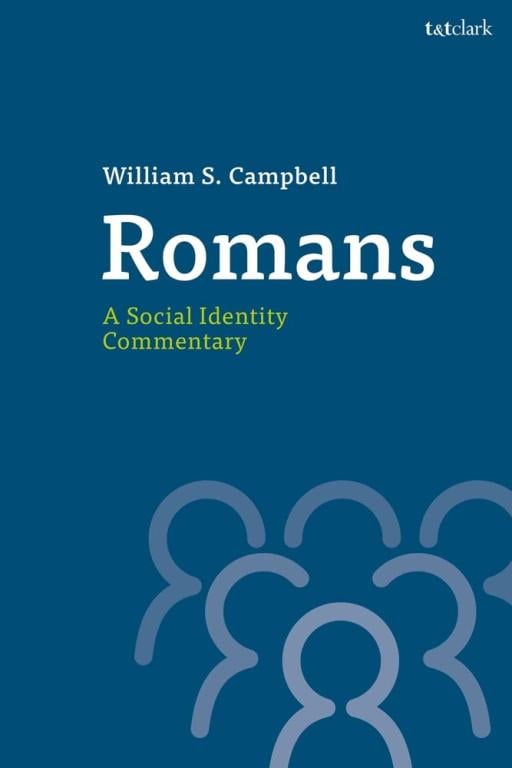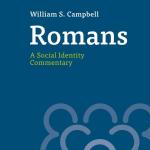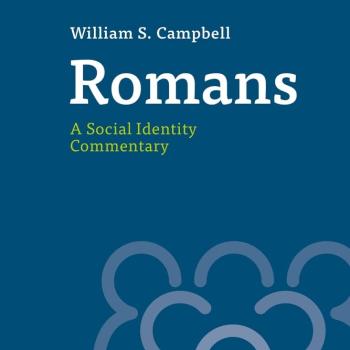Beginning assumptions are important, and Romans is no exception to that rule. But one’s starting orientation is crucial as well, so in this post a few comments need to be made about the assumption of Nanos that the earliest Jewish and even Gentile Christians primarily met in synagogues with Jews in Rome and elsewhere. This is because, it is assumed, the ‘parting of the ways’ between Jews and Christians had not happened yet. The problem with this theory, at least vis a vis the evidence in the NT when we are talking about the 30s to 50s A.D. is that the evidence suggests that even the very earliest Jewish Christ-followers already had their own meetings and meals and worship together, and it was not in the synagogues.
While there are many variations to the theme entitled ‘Paul within Judaism’ and many forms the argument takes, one thing they all have in common is a rather flat denial that ‘the parting of the ways’ happened early on. Sometimes this theory has taken the form that followers of Christ simply met in synagogues in the earliest stages of their existence since they were overwhelmingly Jews, messianic Jews who believed in Jesus, but nonetheless Jews. One of the major problems with the ‘within Jewish synagogue’ part of the arguments is the evidence suggests the contrary.
And before I lay this out, unfortunately the evidence of Acts is assumed to be late, distorted, or is simply ignored or is misinterpreted by some forms of the Paul within Judaism arguments. See my detailed commentary on Acts. If indeed Luke was a sometime companion of Paul towards the latter half of Paul’s ministry, then some of these forms of dismissals of Acts become impossible.
Consider for example the early portions of the book of Acts. We are told that the disciples met both in Solomon’s portico in the temple, where sharing the Gospel happened, and also in their own ‘in house’ meetings as described in the summaries in Acts 2 and Acts 4. But even before that, we hear about the disciples meeting in an upper room within Jerusalem— Acts 1.13— not in the synagogue. Acts 2 indicates that that is where the Pentecost event began to happen. At the end of the same passage we hear this:
“All the believers were together and had everything in common. 45 They sold property and possessions to give to anyone who had need. 46 Every day they continued to meet together in the temple courts. They broke bread in their homes and ate together with glad and sincere hearts, 47 praising God and enjoying the favor of all the people. And the Lord added to their number daily those who were being saved.”
They met in the Temple courts, and also ‘in their homes’ including as we learn later, in the home of the mother of John Mark, and what they did there was worship, have a fellowship meal, share property, indeed share all things in common.
Acts 4.32-36 enhances this picture, as does Acts 6, indicating that these were not merely dinner meetings in homes, they were also organizational meetings, so that they could take care of the poorer members of their own community. This is a theme further expanded in Acts 6 where the concern is for widows within their community who were marginalized and needed aid. What we see already in these chapters is the organization of a community separate from the synagogue.
Did Jewish followers of Christ continue to go to synagogue, including going to share the Good News about Jesus? Yes they did as we learn in Acts 7 which tells us about Stephen bearing witness in the synagogue of the Hellenists (i.e. the Greek speakers) in Jerusalem. For his troubles Stephen was stoned for sharing a message deemed heretical at best, or indicating Stephen’s apostasy.
Here a side comment about Paul’s misadventures is in order. 2 Cor. 11—
Are they Hebrews? So am I. Are they Israelites? So am I. Are they Abraham’s descendants? So am I. 23 Are they servants of Christ? (I am out of my mind to talk like this.) I am more. I have worked much harder, been in prison more frequently, been flogged more severely, and been exposed to death again and again. 24 Five times I received from the Jews the forty lashes minus one. 25 Three times I was beaten with rods, once I was pelted with stones, three times I was shipwrecked, I spent a night and a day in the open sea, 26 I have been constantly on the move. I have been in danger from rivers, in danger from bandits, in danger from my fellow Jews, in danger from Gentiles; in danger in the city, in danger in the country, in danger at sea; and in danger from false believers.
Now why exactly would Paul have been flogged 39 times on five separate occasions? The short answer is because he was preaching an extremely unacceptable message in synagogues place after place. And he endured such torture because he wanted to continue to go to synagogues, even those he had visited before, not to be part of the synagogue community, but to bear witness for Christ.
As Rom. 1 says, the Good News is for the Jew first, and also for the Gentiles, so even though he was mainly the apostle to the Gentiles, his regular practice, as chronicled in Acts was to go to synagogues or Jewish meeting places wherever he went, and start sharing there. This caused trouble wherever Paul went— Pisidian Antioch, Iconium, Corinth, and it caused trouble for those who became his co-workers in Corinth, namely Priscilla and Aquila when they share Christ in the synagogue in Rome, which caused such a row, that it came to the attention of the Emperor Claudius and he exiled various Jewish persons who were Christ followers.
In short, there was a pattern of sharing the Gospel in synagogues, followed by rejection, expulsion, sometimes 39 lashes, sometimes even stoning. Does this sound like early Christians within Judaism? No it does not. It sounds like early Jewish Christians (and later Gentile God-fearers) being expelled from the synagogue, and having their own meetings in homes.
It is of course true that both Acts 15, and before that Gal. 1-2 indicates that there were Pharisaic Jewish followers of Christ who thought that the Gentile issue should be settled by them being integrated into Judaism, by becoming God-fearers, then proselytes and in due course keeping some then all of the Law. For those more traditional followers of Christ, who were overruled by James, Peter, John and Paul and his co-workers, the goal was Christ following within Judaism. But this was not the view of Paul, or in due course the leaders of the Jerusalem church itself by 50 A.D. Indeed, the concern in the apostolic decree is not for how can we better integrate Gentiles into Judaism. No, the concern is about the Gospel witness to Jews in synagogues being damaged by Gentiles continuing to go to pagan temple feasts where idolatry and immorality was happening.
If we wanted to draw an analogy within Judaism, then try comparing the Jesus movement to what was happening at Qumran, who were utterly convinced that they had to separate from the corrupt Jewish leadership in Jerusalem, and believed judgment was coming for them and for the Temple in Jerusalem. Jesus, after all seems to have held a similar view about that temple becoming the temple of doom.
What about Christ followers in Rome? While there is evidence from the 40s about them bearing witness in synagogues and being expelled, there is no evidence at all that they were solely part of synagogue communities. The Jews and God-fearers that returned to Rome from Pentecost in A.D. 30 probably did continue to go to synagogue, but most likely they had their own meetings focused on Christ and nascent forms of Christian worship in homes as well. So, I agree with Bill Campbell when he suggests that Gentile Christ followers may have met in homes or workshops for their specific forms of worship and instruction, and meals as well. But he also still talks about Jewish Christ followers of several sorts (Jews, God-fearers) still being part of the synagogue community. I don’t really see any compelling evidence for that in Rome, or elsewhere.












